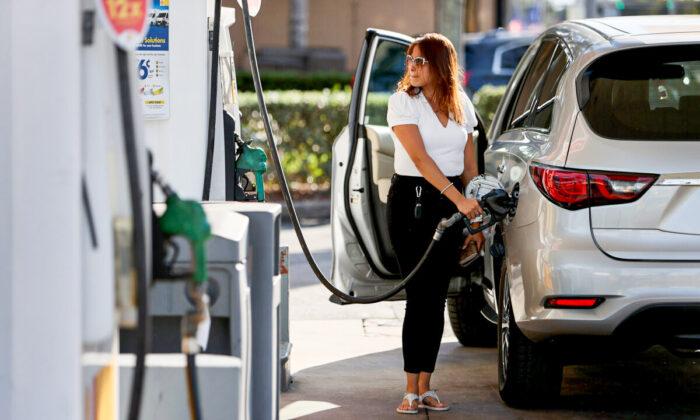Gas prices across the country have fallen since last week amid fears of an Omicron variant-led economic slowdown.
The national average price of regular gas per gallon dipped 4 cents this week to $3.35.
Indiana saw the largest price drop, at 21 cents, to an average of $3.192 per gallon.
Prices are expected to further decline this winter as fewer drivers are expected on the roads.
For consumers, the last time gasoline prices were this low was on Oct. 20, said the American Automobile Association (AAA). The price of gas is still $1.21 more than at the same time last year.
The opening price on Monday of West Texas Intermediate crude was $68.18 per barrel, $4 down from last Monday, with Brent crude oil at $71.82 per barrel, nearly $5 below prices last week.
Last week, OPEC and its oil-producing allies agreed not to cut production, while pledging to increase oil supply by 400,000 barrels per day in January, most likely in response to the Biden administration’s call to increase supply to tame high fuel prices.
President Joe Biden ordered a record 50 million barrels of oil released from the U.S. Strategic Petroleum Reserve on Nov. 23 to try and quell the rising prices at the pumps.
It could even push the national average to $2.99 per gallon by Christmas, “barring any changes in the omicron variant,” he said.
The Omicron variant has yet to make an impact on the U.S. economy so far.
“Consumers may be catching a break at the pump right now, but it’s not for a very good reason,” said Andrew Gross, an AAA spokesman.
“A potential COVID-19 induced economic slowdown hurts everyone and could prompt OPEC to slash production if oil prices drop too low.”
However, “should Omicron see some level of discovery that leads nations to close borders beyond their previous moves, OPEC could step in to immediately cut production,” Gross said.
It is believed that the slight decrease in demand contributed to falling global gas prices, while lower crude prices put downward market pressure on pump prices.





